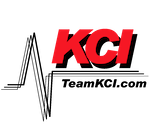Common Hardware Issues: Troubleshooting and Maintenance Guide
Hardware issues can be frustrating and disruptive, causing delays and hindrances to our daily activities. From malfunctioning keyboards to random shutdowns, these problems can arise at any time, leaving us feeling helpless and seeking solutions. In this troubleshooting and maintenance guide, we will discuss some common hardware issues, their potential causes, and provide tips to resolve them effectively.
One of the most prevalent hardware issues is the computer freezing or crashing. This problem can occur due to various reasons, such as inadequate cooling, software conflicts, or even malware infections. To troubleshoot this issue, start by checking if your computer’s fans are working correctly and are free from dust buildup. Dust accumulation can hinder airflow, causing the system to overheat and freeze. If necessary, clean the fans using compressed air or a soft brush. Additionally, monitoring the temperature using software can help identify any abnormalities and provide insight into possible overheating issues. If the problem persists, it is recommended to scan the system for malware and viruses, as they can cause instability and crashes. Using reliable antivirus software and performing regular scans can help identify and eliminate any potential threats.
Another common hardware issue revolves around networking problems, particularly Wi-Fi connectivity. Slow or intermittent Wi-Fi signals can make it challenging to work, stream, or browse the internet efficiently. To fix this issue, first, ensure that your Wi-Fi router is placed in a central location and free from obstructions. Physical barriers such as walls and other objects can weaken the signal strength. Additionally, check if there are any interference-causing devices nearby, such as cordless phones or microwaves. If so, relocate them or consider using a different channel on your router to minimize interference. Updating your router’s firmware and installing the latest drivers for your Wi-Fi adapter can also enhance connectivity and resolve any compatibility issues. If all else fails, contacting your internet service provider for assistance or investing in a more powerful router may be necessary to ensure stable and fast internet connection.
Hardware issues can disrupt our productivity and cause frustration if left unaddressed. By understanding common problems like system freezing and networking issues, we can effectively troubleshoot and resolve them. From cleaning computer fans to updating Wi-Fi drivers, proper maintenance and periodic checks can go a long way in preventing these hardware issues. Remember, if all else fails, it is always wise to seek professional assistance to ensure a smooth and hassle-free computing experience.

